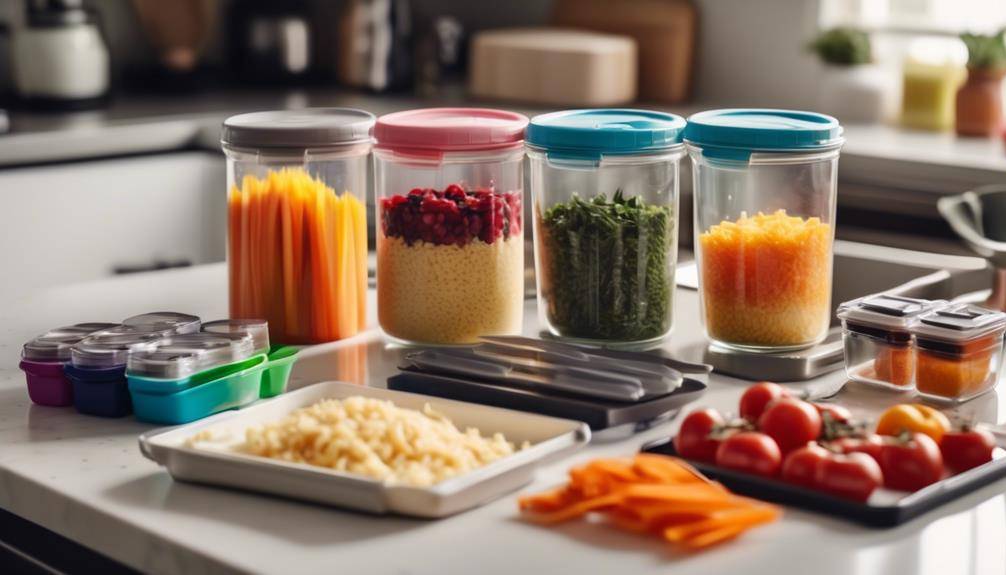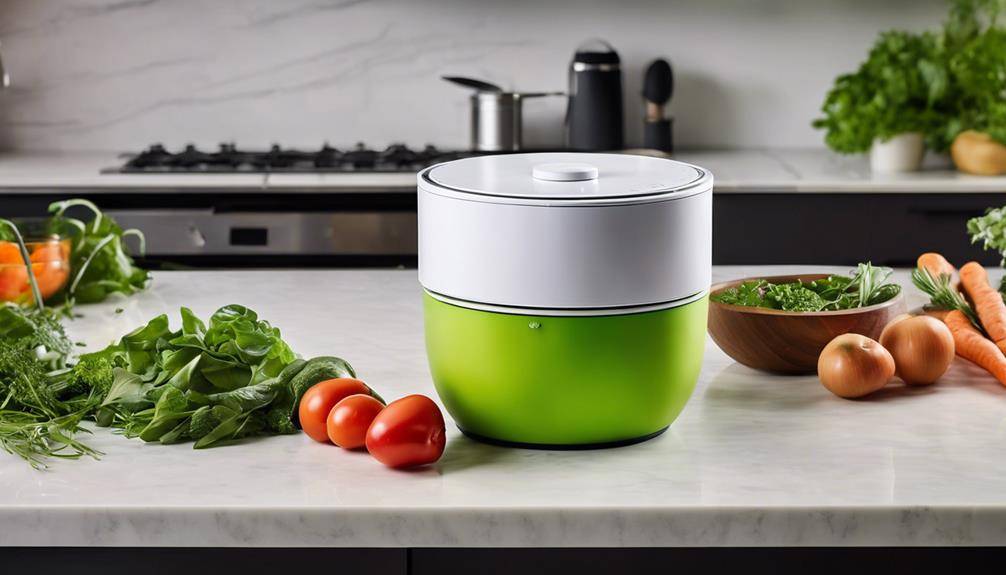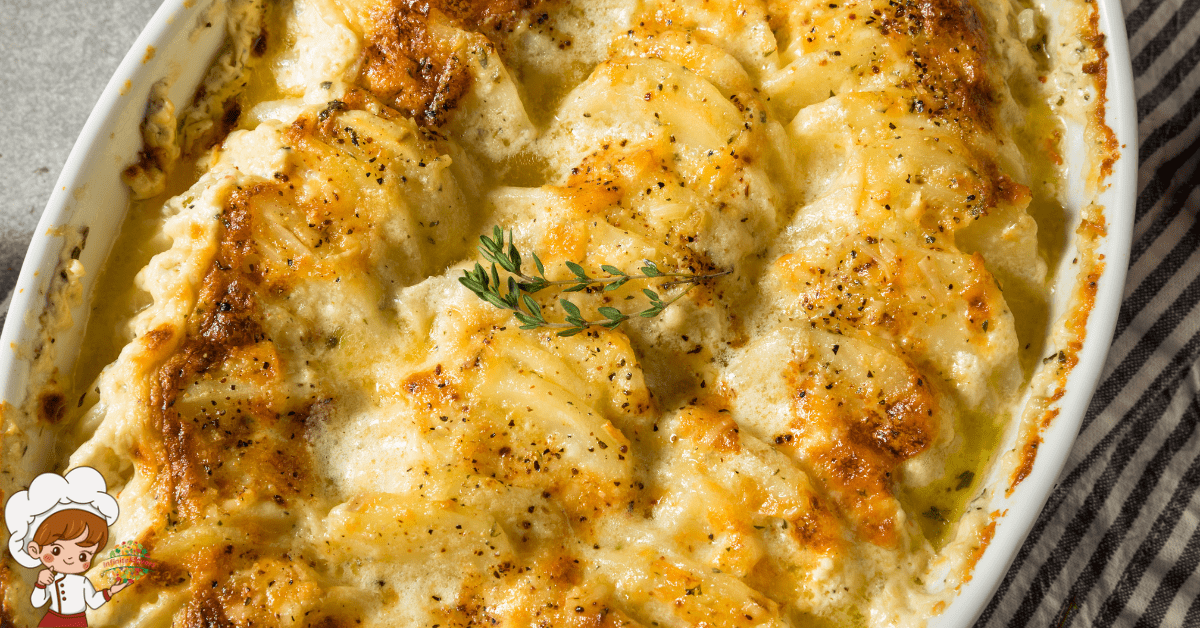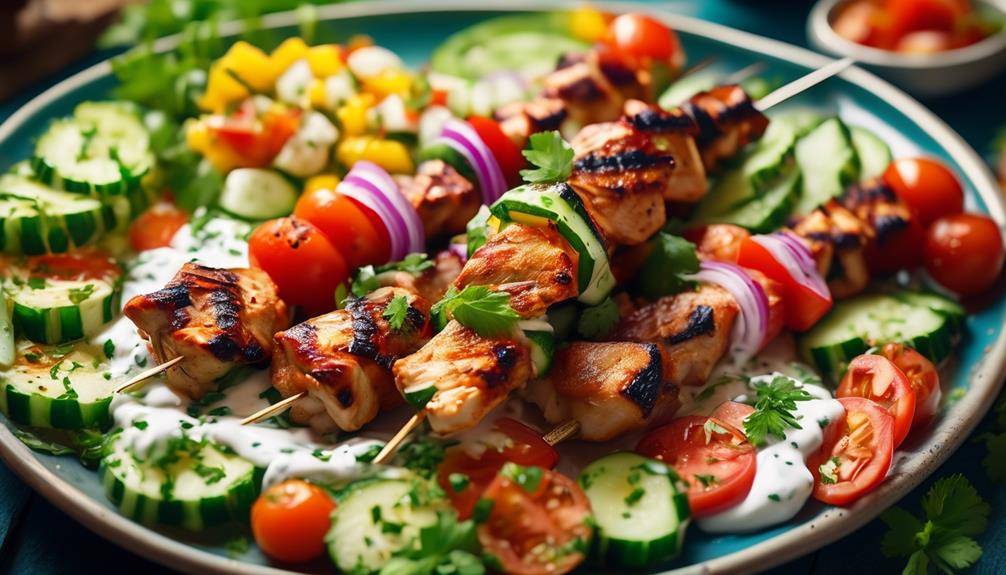How To Make Perfectly Grilled Fish
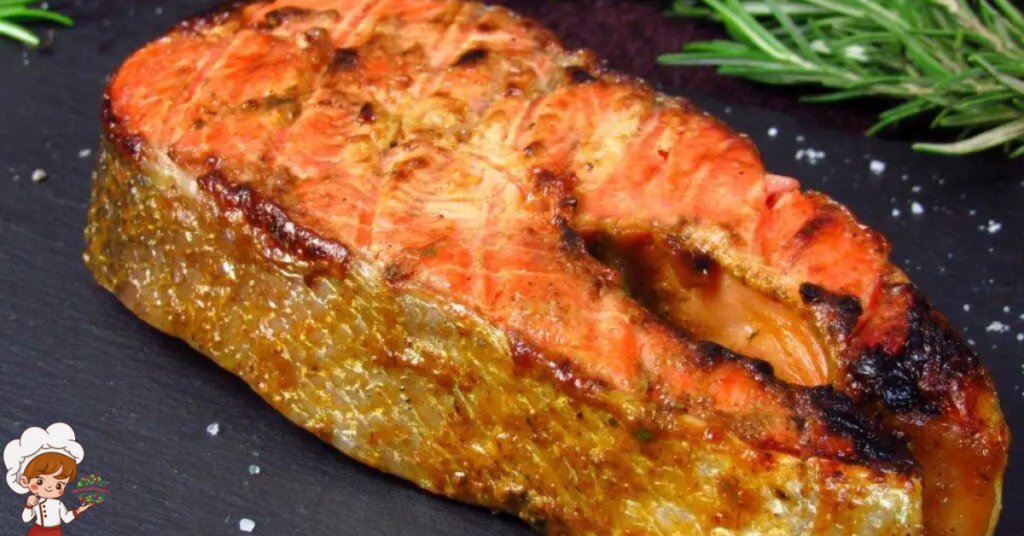
Perfectly Grilled Fish
Are you ready to dive into the world of perfectly grilled fish? Look no further than this comprehensive how-to guide. It will take you on a journey, unlocking the secrets to grilling fish like a pro. From selecting the freshest catch to preparing the grill just right, this guide has got you covered. Discover the art of marinating and seasoning, and learn the ideal temperature to preheat your grill. With step-by-step instructions on monitoring and flipping the fish, you’ll never have to worry about overcooking again. And when it comes to determining when your fish is done, we’ve got your back. So, grab your apron and get ready to impress your friends and family with perfectly grilled fish every time.
Selecting the Freshest Fish
- Use your senses to choose the freshest fish at the market.
When it comes to grilling fish to perfection, selecting the freshest fish is of paramount importance. A trip to the fish market can sometimes be overwhelming, with rows and rows of different fish species on display. However, by using your senses, you can ensure that you bring home the highest quality fish for your grilling adventure.
Firstly, pay attention to the appearance of the fish. Look for fish with clear, bright eyes that are not cloudy or sunken. The skin should be shiny and firm, with vibrant colors. Avoid any fish that appears dull or discolored, as this may indicate a lack of freshness.
Next, use your sense of smell to assess the fish’s quality. Fresh fish should have a clean, briny scent, reminiscent of the sea. If the fish smells overly fishy or has an ammonia-like odor, it is best to steer clear.
Another important factor to consider is the texture of the fish. Gently press the fish with your fingertips to ensure it feels firm and bounces back when touched. Avoid fish that feels soft or mushy, as this is a sign of deterioration.
Lastly, don’t be afraid to ask the fishmonger for assistance. They are experts in their field and can provide valuable insights on the freshest catches of the day. They can also guide you on which fish are best for grilling, taking into account their flavor, texture, and oil content.
Preparing the Grill
Now that you’ve selected the freshest fish for your grilling adventure, it’s time to get your grill ready. Preparing the grill is crucial to achieving that perfectly grilled fish. The first step is to control the temperature of your grill, ensuring it’s hot enough to sear the fish but not too hot to burn it. Next, make sure to clean and maintain the grates, removing any leftover residue from previous grilling sessions. These two points are essential for creating the ideal grilling environment for your fish.
Grill Temperature Control
Start by preheating your grill to the desired temperature for perfectly grilled fish. Proper grill maintenance is crucial for achieving consistent results. Here are some temperature control techniques to help you master grilling fish like a pro:
- Clean the grill: Before preheating, ensure that your grill grates are clean and free from any debris. This will prevent any unwanted flavors from transferring to your fish.
- Use direct and indirect heat: For delicate fish fillets, it’s best to start with indirect heat. This means turning on only one side of the grill and placing the fish on the other side. This gentle heat will prevent the fish from drying out.
- Direct heat: If you’re grilling thicker cuts or whole fish, you can use direct heat. This involves cooking the fish directly over the heat source for a shorter period, giving it a nice sear while keeping the inside moist.
- Monitor the temperature: Invest in a good grill thermometer to monitor the grill temperature accurately. This will help you maintain the desired level of heat throughout the cooking process.
Grate Cleaning and Maintenance
To prepare the grill for perfectly grilled fish, begin by cleaning and maintaining the grates. Proper grate maintenance is crucial to ensure that your fish cooks evenly and doesn’t stick to the grill. Start by preheating the grill on high for about 15 minutes to burn off any food residue from previous cookouts.
Once the grates are hot, use a grill brush to scrub away any remaining debris. Make sure to clean both the top and bottom of the grates thoroughly. For stubborn residue, you can use a mixture of warm water and mild dish soap. Rinse the grates thoroughly and dry them with a clean cloth. Finally, before grilling your fish, lightly oil the grates to prevent sticking. By following these cleaning techniques, you’ll have perfectly grilled fish every time.
Cleaning and Preparing the Fish
First, gather all the necessary tools and ingredients for cleaning and preparing your fish. Here’s a list to help you get started:
- Cleaning Techniques:
- Rinse the fish under cold water to remove any dirt or debris from the surface.
- Use a sharp knife to scale the fish, scraping from tail to head. This will help remove the tiny scales and make the skin easier to eat.
- Gut the fish by making a shallow incision along the belly and carefully removing the innards. Be sure to rinse the cavity thoroughly to remove any remaining blood or organs.
- Remove the gills by cutting them out with a pair of kitchen shears. This step is essential as it can prevent any unpleasant flavors from transferring to the meat during cooking.
- Deboning Process:
- Lay the fish flat on a cutting board and locate the backbone. Starting from the tail end, make a shallow cut along the backbone using a fillet knife.
- Gently lift the fillet away from the bones, using your fingers to guide the knife and separate the flesh. Take your time to avoid any unnecessary waste.
- Once the fillet is separated, carefully run your fingers along the length of the flesh to detect any remaining pin bones. Use a pair of tweezers or fish pliers to remove them, ensuring a smooth eating experience.
Now that you have cleaned and deboned the fish, you are one step closer to grilling perfection. Remember to always handle the fish with care and maintain proper hygiene throughout the process. With these techniques, you’ll be well on your way to enjoying a delicious and perfectly grilled fish.
Marinating and Seasoning the Fish
Now, let’s talk about marinating and seasoning your fish to enhance its flavor and ensure a perfectly grilled result. Discover the best marinades that will infuse your fish with deliciousness, whether you prefer a tangy citrus blend or a savory herb mixture. Learn the different seasoning techniques that can elevate your fish to new heights, from using a dry rub to creating a flavorful marinade. Remember, marinating your fish not only adds incredible taste but also helps to keep it moist and tender throughout the grilling process.
Best Marinades for Fish
Get the most flavor out of your grilled fish by marinating and seasoning it with the best marinades. When it comes to marinating fish, there are endless possibilities to enhance its taste and texture. Here are two sub-lists of the best marinades for fish:
Marinades for Beginners:
- Lemon and Herb: A classic combination of fresh lemon juice, minced garlic, and chopped herbs like parsley, dill, or cilantro. This marinade adds a bright and zesty flavor to the fish.
- Soy Ginger: A blend of soy sauce, grated ginger, minced garlic, and a touch of honey. This marinade gives the fish a savory and slightly sweet taste with a hint of ginger spice.
Marinades for Fish Grilling Equipment:
- Spicy Cajun: A mix of paprika, cayenne pepper, garlic powder, onion powder, and a pinch of salt. This marinade adds a bold and fiery flavor to the fish.
- Mediterranean: A combination of olive oil, lemon juice, minced garlic, dried oregano, and black pepper. This marinade infuses the fish with Mediterranean flavors, perfect for a summer barbecue.
Experiment with these marinades to elevate your grilled fish game and impress your guests with mouthwatering flavors.
Seasoning Techniques for Flavor
Enhance the flavor of your grilled fish by utilizing various seasoning techniques. One way to add flavor is by using flavorful rubs. These rubs are made by combining different herbs, spices, and seasonings to create a delicious coating for your fish. You can experiment with different combinations to find the perfect blend that suits your taste. Another option is to use homemade marinades.
Marinades are a great way to infuse your fish with flavor and tenderize it at the same time. You can create your own marinades using ingredients like lemon juice, olive oil, garlic, and herbs. The key is to let the fish marinate for at least 30 minutes to allow the flavors to penetrate. So, go ahead and get creative with your seasoning techniques to take your grilled fish to the next level of deliciousness.
Importance of Marinating
To maximize the flavor and tenderness of your grilled fish, marinating is an essential step that builds upon the seasoning techniques discussed earlier. Marinating allows the fish to absorb the flavors of the marinade, resulting in a more delicious and flavorful dish. Here are some key reasons why marinating is important:
- Tenderizing: Marinating helps to break down the proteins in the fish, making it more tender and juicy.
- Flavor enhancement: By marinating the fish, you can infuse it with various flavors, such as citrus, herbs, or spices, which will elevate the taste and create a more satisfying meal.
Different marinades offer unique benefits. For example:
- Citrus-based marinades can add a refreshing tanginess to the fish.
- Soy sauce-based marinades can provide a savory umami flavor.
- Herb-infused marinades can impart a fragrant and aromatic taste.
Experiment with different marinades to discover your favorite flavors and create a truly memorable grilled fish dish.
Preheating the Grill to the Ideal Temperature
Start by heating the grill to the optimal temperature for perfectly grilled fish. Preheating is a crucial step that ensures even cooking and prevents your fish from sticking to the grates. To achieve the ideal temperature, you need to perform regular grill maintenance and have the right grilling tools.
Before preheating, make sure your grill is clean. Remove any leftover food particles or grease from the grates using a grill brush. This not only prevents flare-ups but also ensures that your fish will have beautiful grill marks without any unwanted flavors.
Next, check that your grilling tools are in good condition. A sturdy pair of long-handled tongs is essential for flipping delicate fish fillets without causing them to break apart. Invest in a reliable instant-read thermometer to accurately gauge the grill’s temperature. This will help you avoid undercooking or overcooking your fish.
Once your grill is clean and your tools are ready, it’s time to preheat. Turn on all the burners to their highest setting and close the lid. Allow the grill to heat up for about 10 to 15 minutes. This will ensure that the grates get hot enough to sear the fish and create those coveted grill marks.
During this preheating process, the temperature inside the grill will rise gradually. It’s important to monitor the grill’s temperature using the instant-read thermometer. For most fish, a preheating temperature of around 400 to 450 degrees Fahrenheit is ideal. This high heat will give your fish a crisp exterior while keeping the interior moist and tender.
Cooking Techniques for Different Types of Fish
Now that you’ve preheated your grill to the ideal temperature, it’s time to dive into the cooking techniques for different types of fish. Each type of fish requires its own specific cooking method to bring out its best flavors and textures. Whether you’re grilling a delicate white fish like tilapia or a meatier fish like salmon, understanding the right technique is crucial. Additionally, choosing the right seasoning can enhance the natural flavors of the fish and take your grilled dish to the next level. Let’s explore these fish-specific cooking methods and seasoning options to ensure you achieve perfectly grilled fish every time.
Fish-Specific Cooking Methods
You can achieve delicious results by using different cooking techniques for various types of fish. When it comes to grilling fish, it’s important to have the right equipment and to use the right techniques. Here are some tips to help you get the perfect grilled fish every time:
- Direct grilling: This technique works well for sturdy fish like salmon or tuna. Simply place the fish directly on the grill grates and cook over medium-high heat until it’s cooked through.
- Indirect grilling: For delicate fish like flounder or sole, indirect grilling is the way to go. Start by preheating one side of the grill and placing the fish on the other side. This allows for gentle, even cooking without drying out the fish.
Remember to always oil the grill grates and to flip the fish halfway through cooking for even browning. With the right techniques and equipment, you’ll be able to enjoy perfectly grilled fish every time.
Choosing the Right Seasoning
When grilling fish, it’s essential to select the right seasoning that complements the flavors of different types of fish. The key to a perfectly grilled fish lies in understanding the characteristics of each type of fish and choosing the appropriate seasoning to enhance its natural flavors. For delicate fish like tilapia or sole, a simple seasoning of lemon juice, olive oil, and a sprinkle of salt and pepper will suffice. For heartier fish like salmon or tuna, bolder flavors like garlic, dill, or soy sauce can be used to add depth and complexity.
It’s important to remember that the seasoning should not overpower the fish, but rather enhance its taste. In addition to seasoning, grill temperature control is crucial to prevent the fish from drying out or sticking to the grill. Make sure to preheat the grill to medium-high heat and oil the grates before placing the fish on it. Regular grate cleaning and maintenance are also important to ensure even cooking and prevent the fish from sticking. By choosing the right seasoning and practicing proper grill temperature control, your grilled fish will be bursting with flavor and perfectly cooked every time.
Monitoring and Flipping the Fish
Keep an eye on the fish and flip it at the right moment to ensure a perfectly grilled result. Flipping the fish may seem like a simple task, but it requires finesse and attentiveness. By using the right flipping techniques and monitoring tools, you can achieve that ideal grilled fish that will leave your taste buds singing.
Here are some tips to help you master the art of flipping fish:
- Use a wide spatula: A wide spatula will provide better support and stability when flipping the fish. It will help you maintain the shape of the fillet and prevent it from falling apart.
- Gauge the cook: Pay close attention to the color and texture of the fish. As it cooks, the flesh will turn opaque and start to firm up. Use a fork or a small knife to gently press down on the fish. If it flakes easily and is no longer translucent, it’s time to flip.
- Apply gentle pressure: When flipping the fish, apply gentle pressure with the spatula to ensure it stays intact. Carefully slide the spatula under the fillet and lift it, making sure to support the entire piece. Then, swiftly and confidently flip it over.
- Avoid excessive flipping: Flipping the fish too many times can lead to uneven cooking and a dry result. Aim to flip the fish only once, unless the recipe specifically calls for multiple flips.
- Use a timer: If you’re unsure about the cooking time, use a timer to keep track. Different types of fish require different cooking times, so it’s essential to know the recommended times for the specific fish you’re grilling.
Determining When the Fish Is Done
To ensure that your fish is perfectly grilled, accurately determining its doneness is crucial. One of the most reliable ways to determine if your fish is cooked to perfection is by checking its internal temperature. By using a meat thermometer, you can easily monitor the temperature of the fish as it cooks.
To check the internal temperature, insert the thermometer into the thickest part of the fish, making sure to avoid hitting any bones. Different types of fish have different recommended internal temperatures, so it’s essential to know the specific guidelines for the fish you’re grilling. For example, a delicate fish like flounder or sole should be cooked until it reaches an internal temperature of 145°F (63°C), while a firmer fish like salmon or tuna should be cooked to 130°F (54°C) for medium-rare or 140°F (60°C) for medium.
Keep in mind that the fish will continue to cook for a few minutes after you remove it from the grill, so it’s best to remove it when it’s a couple of degrees below the desired temperature. This will allow the residual heat to finish cooking the fish while keeping it moist and flavorful.
If you don’t have a meat thermometer, you can also determine the doneness of the fish by checking its texture. When the fish is fully cooked, it should be opaque and flake easily with a fork. The flesh should be firm but still moist, and it should have a slightly translucent appearance.
Resting and Serving the Grilled Fish
Now that you have determined the perfect doneness of your grilled fish, it’s time to let it rest and prepare to serve it. The resting period is crucial as it allows the juices to redistribute throughout the fish, ensuring a moist and flavorful bite. Here are a couple of things to keep in mind during this important step:
- Resting Period:
- After removing the fish from the grill, let it rest for about 5 minutes on a clean plate or cutting board. This short resting period allows the fish to continue cooking gently, reaching its ideal internal temperature and ensuring that it remains juicy and tender.
- Cover the fish loosely with aluminum foil while it rests. This helps to retain heat and prevents the fish from cooling too quickly. It also allows the flavors to develop further, enhancing the overall taste of the grilled fish.
- Plating and Presentation:
- Carefully transfer the rested fish to a serving platter or individual plates, using a wide spatula to maintain its shape and prevent it from falling apart.
- Garnish the fish with fresh herbs, such as parsley or dill, to add a pop of color and freshness. Squeezing a bit of lemon juice over the top can also help to brighten the flavors.
- Consider serving the grilled fish with a side of vibrant and colorful vegetables or a refreshing salad to create a balanced and visually appealing meal.
- Remember to pay attention to the presentation of your dish. Arrange the fish and accompaniments in an aesthetically pleasing manner, making it visually inviting and appetizing.
With these tips in mind, you are now ready to enjoy your perfectly grilled fish. The resting period and thoughtful plating and presentation will elevate your dining experience and impress your guests with both taste and visual appeal.
Tips for Perfectly Grilled Fish Every Time
To ensure consistently grilled fish, follow these essential tips that will guarantee perfect results every time. First and foremost, having the right grilling tools is crucial. Invest in a good quality fish spatula or tongs that have a delicate touch to prevent the fish from falling apart. Additionally, a grill basket can be a handy tool for grilling smaller fish or delicate fillets that might otherwise stick to the grill grates.
When it comes to safety precautions, always make sure to clean your grill thoroughly before cooking fish. Residue from previous cookouts can affect the flavor of your fish and potentially cause it to stick. Preheating the grill is also important to ensure even cooking and prevent sticking. Aim for a medium-high heat, around 350-400 degrees Fahrenheit.
To further prevent sticking, oil the grill grates before placing the fish on them. Use a high smoke point oil like canola or vegetable oil and apply it to a folded paper towel using tongs. Gently rub the oiled paper towel over the grates, creating a non-stick surface.
Another tip for perfectly grilled fish is to keep the skin on. This helps to hold the fish together and adds flavor. If you prefer skinless fish, you can still grill it by using a fish basket or grilling mat to prevent it from falling apart.
Lastly, resist the temptation to flip the fish too soon. Let it cook undisturbed for a few minutes on one side before gently flipping it. This will help to develop those beautiful grill marks and ensure that the fish cooks evenly.
Frequently Asked Questions
Can I Use Frozen Fish for Grilling, or Does It Have to Be Fresh?
You can definitely use frozen fish for grilling, but using fresh fish has its benefits. While frozen fish is convenient, fresh fish tends to have better flavor and texture.
What Types of Wood Chips or Charcoal Should I Use for Grilling Fish?
To achieve the best flavor, you have options when it comes to grilling fish. Different types of wood chips, like mesquite or hickory, add unique smoky notes. Charcoal, on the other hand, provides a consistent heat and enhances the overall taste.
Can I Use a Gas Grill Instead of a Charcoal Grill for Grilling Fish?
You can definitely use a gas grill instead of a charcoal grill for grilling fish. The advantage of a gas grill is that it’s easier to control the temperature, but some argue that charcoal imparts a smokier flavor.
How Long Should I Marinate the Fish Before Grilling?
To achieve the best flavor, marinate your fish for at least 30 minutes before grilling. This allows the flavors to penetrate the fish and enhance its taste. Remember to adjust the grilling temperature accordingly for a perfectly cooked dish.
What Are Some Common Mistakes to Avoid When Grilling Fish?
When grilling fish, avoid common mistakes like not preheating the grill, using high heat, and flipping the fish too soon. Follow these tips for perfectly grilled fish: preheat, oil the grates, cook over medium heat, and wait until the fish easily releases from the grill.
Conclusion
Congratulations! You now have all the knowledge and skills you need to grill the perfect fish every time. From selecting the freshest fish to mastering the art of seasoning and flipping, this comprehensive guide has got you covered. Remember to preheat your grill to the ideal temperature and keep a close eye on your fish as it cooks. And don’t forget to let it rest before serving. With these tips, you’ll be serving up delicious, perfectly grilled fish that will impress everyone at your next barbecue. Happy grilling!




